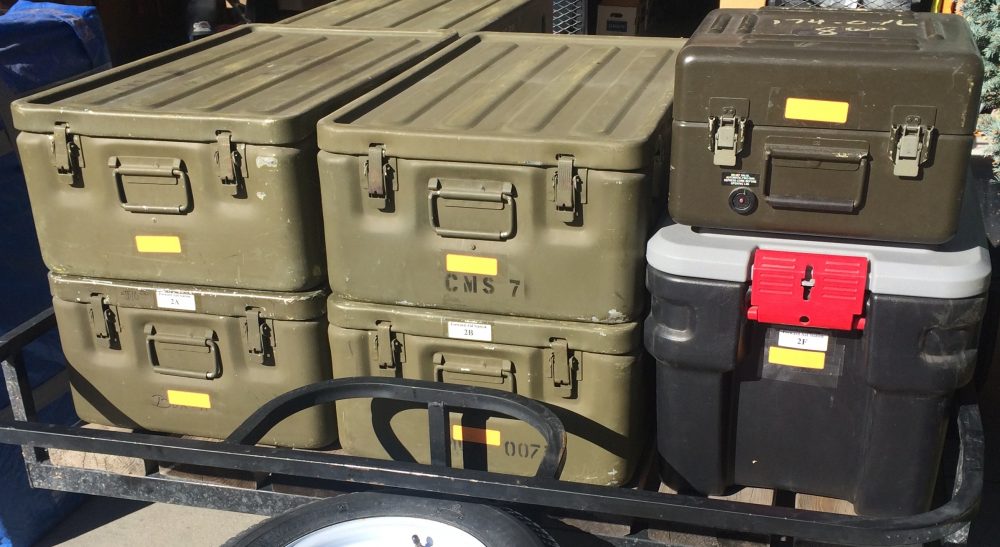While staring out an airplane window last week, I marveled at the multiple thicknesses of acrylic that protected me from the low pressure and frigid temperatures less than a paperback-book thickness away. While such idle fascination is the result of a bored mind sitting in one of those flying chicken coops we call ”air travel,” I did realize there was a practical application of this daydreaming.
I realized we often face a very common adversary that is seldom considered because it is universal and generally considered benign, yet can significantly impact our tactical and rescue work. Having destroyed countless dollars’ worth of this everyday substance during training and real operations, I felt it might be worthwhile to discuss my own experiences with our friend and occasional foe: window glass.
If you’ve spent any time as a cop or security professional, you’ve dealt with glass, and it probably opened your eyes to the irritating properties of this otherwise wonderful material. Whether you’re trying to get an uncooperative subject out of a vehicle or forcing your way past a locked door, glass is a surprisingly tough adversary that doesn’t behave at all like the special-effects sugar that shatters so spectacularly when a bad hombre is thrown through the saloon window in a B-movie western.
Furthermore, anyone who might find themselves gunfighting around a vehicle needs to understand how the properties of this remarkable material can significantly alter how bullets fly and where they impact.
First, as previously mentioned, the glass of television and movies is a far different substance than you will ever encounter in real life. Real glass is outstanding at slicing long bloody furrows in your tender flesh if you attempt to emulate your favorite action hero.
I once heroically leapt through a French door that had previously been hit with a window punch, and the safety-glass shards that went between my helmet and body armor worked wonderfully to remind me that it wasn’t such a good idea.
If there is any way to avoid bodily passing through glass, do it. For instance, reaching inside a vehicle after an accident or a broken house window is exceptionally dangerous even when wearing long sleeves and gloves. When you consider how near the surface the large arteries and veins lie around your armpit, it’s pretty easy to understand why reaching over and through razor-sharp glass isn’t a smart move.
Unfortunately, in the heat of the moment, we find ourselves doing it all the time. Next time: Don’t!
Aside from the cutting aspect, there are two other significant properties of glass to consider: the difficulty in penetrating it and what it does to the flight of a bullet. Let’s start with the first.
If you’ve ever tried to break into a vehicle either for tactical reasons or while helping victims after a crash, you know that even a well-swung baton often bounces off standard vehicle windows. I’ve seen people punch through glass barehanded while intoxicated, but I’ve also seen windows resist repeated blows by metal objects, rocks, boots, and hand tools.
If you’re trying to get through a window, the keys are hardness and concentration of force.
First, you need something hard. Things like boot soles and human hands generally won’t work unless over-the-top force is applied. Yet a small piece of broken ceramic insulator from a spark plug, smartly thrown, is a well-known breaker of windows. The key is the hardness.
But even if you have something hard, like a chunk of granite, you also need to focus the potential energy into a small area, initiating a crack that will ultimately cause the window to fail.
I’m reminded of a comically unpleasant incident a few years ago when I was unable to break into my vehicle with a large rock after I locked myself out at a trailhead high in the mountains. It finally took the edge of a hatchet from a passerby to breach a rear passenger window.
As a rookie cop, I quickly learned how difficult glass can be, so I started carrying a $10 center-loaded window punch on my person while on patrol. I also keep one secured at arm’s length in my personal vehicle in case of entrapment after an accident.
In regard to bullets flying through windows, the only safe bet is no bet. Much of the time, a heavier, slower bullet will punch through in a relatively predictable line, but wild deviation is equally common. Complete bullet fragmentation or gilding/core separation is also commonplace, especially with higher velocities.
There are simply no hard rules. The distance of target and shooter from the glass, the bullet and caliber, the type of glass, and the angle all change the results significantly and often unpredictably.
Overall, it’s one of those things you have to weigh on the fly.
If you need to shoot an advancing assailant through your front windshield because bullets are already flying, go ahead and try it. But realize there is a strong likelihood he’ll be missed or only grazed by shards, while you end up partially deafened and maybe blinded from flying glass splinters.
Obviously, that’s not a good way to fight a gun battle. If there is any other option available, consider taking it, because bottom line, glass can be a real pane.
Brent T. Wheat is a former SWAT officer, canine handler, detective, and patrol supervisor who retired after a 30-year law enforcement career. Brent is the publisher of WildIndiana Magazine, a regionally focused outdoor magazine. He can be reached at [email protected].


